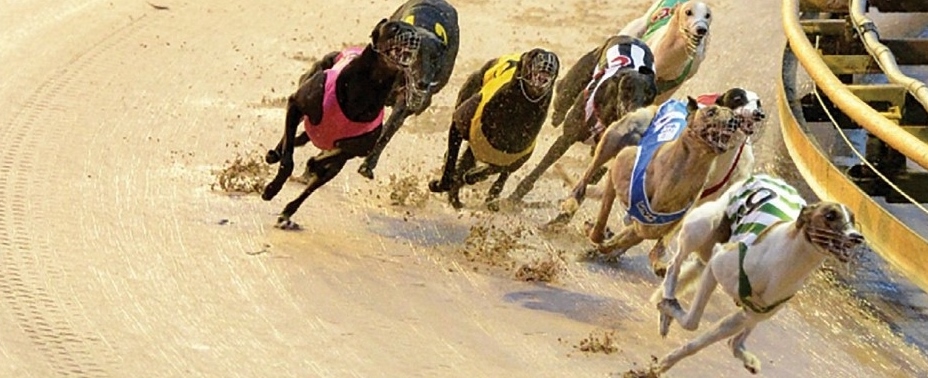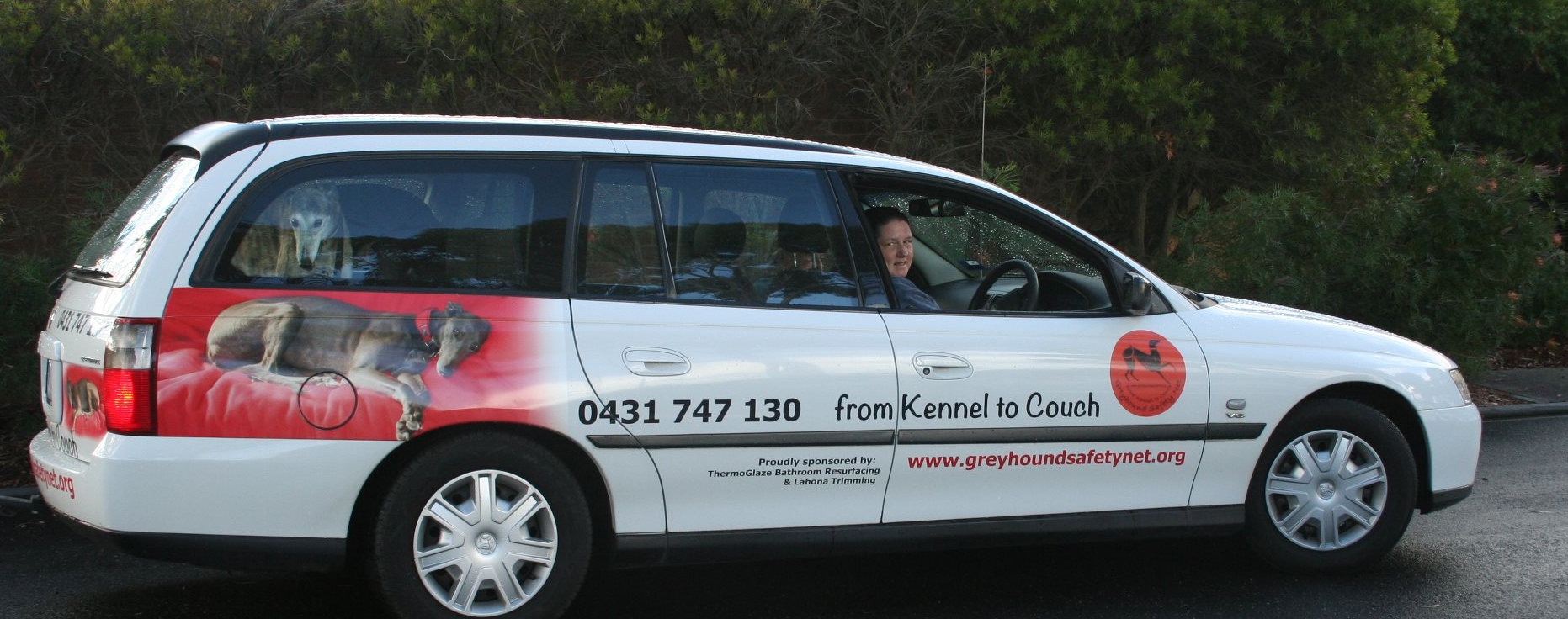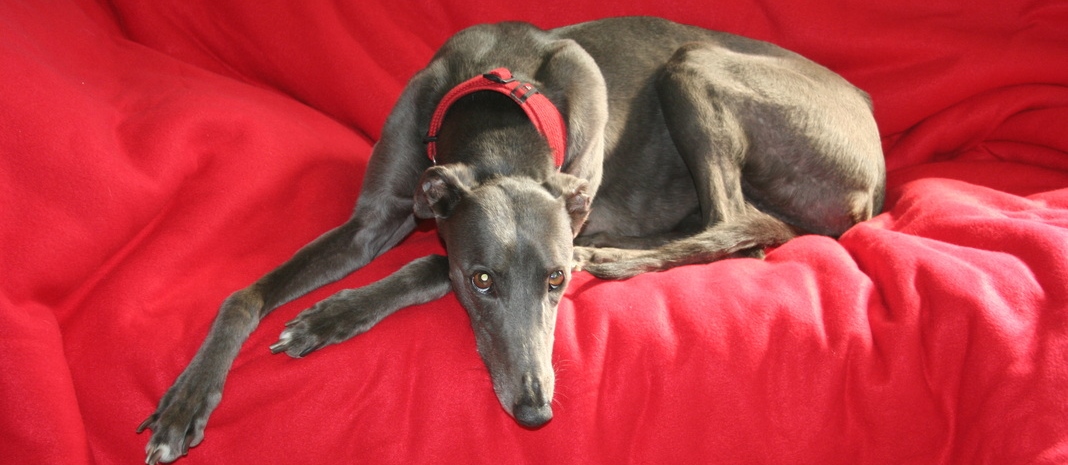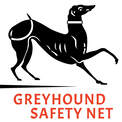Rescue and Rehoming
The story behind a Greyhound's Journey from Kennel to Couch
During the years since its inception in 2006, Greyhound Safety Net has managed to re-home over 1,600 greyhounds, many of them very young (who have never raced at all), and some of them very mature (many of these have been used for breeding and are then passed on when they can no longer be of use that way). And, of course, many greyhounds who have been very successful at racing, but have now retired.
The average age of the greyhounds who come into Greyhound Safety Net’s program is just two and a half years, and yet the average life of a greyhound is 12 - 14 years.
This then, is the story behind most of the greyhounds that we help find loving forever homes for.
In the Kennel
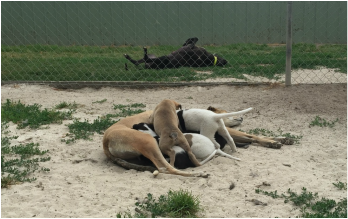
Puppy to 16 Months
Under 3 months puppies remain on the property they were whelped on and are registered with the Racing Industry body in their State and are ear-branded. At around 6 months they usually placed in large runs with other greyhounds the same age, which allows them to run and learn to socialise.
Under 3 months puppies remain on the property they were whelped on and are registered with the Racing Industry body in their State and are ear-branded. At around 6 months they usually placed in large runs with other greyhounds the same age, which allows them to run and learn to socialise.
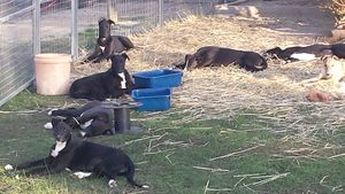
At 16 months trainers will begin the ‘Breaking-in’ process of preparing the young greyhound in for the racetrack. This includes being placed in a starting box, chasing the lure, and running with other greyhounds.
By this stage, it will be known whether the greyhound has the potential to become a ‘racer’. If so, it is given its race name and sent to a trainer.
By this stage, it will be known whether the greyhound has the potential to become a ‘racer’. If so, it is given its race name and sent to a trainer.
Not fast enough
Greyhounds first compete in a qualifying trial with other maiden greyhounds under full racing conditions, and must run under specific times to be eligible to race. Unfortunately, only a few of the estimated 20,000 greyhound pups born each year in Australia have the athletic capabilities and desire to chase at top speed to become a race winner, the rest being discarded without ever making it to the race track.
Greyhounds first compete in a qualifying trial with other maiden greyhounds under full racing conditions, and must run under specific times to be eligible to race. Unfortunately, only a few of the estimated 20,000 greyhound pups born each year in Australia have the athletic capabilities and desire to chase at top speed to become a race winner, the rest being discarded without ever making it to the race track.
The Racing Greyhound
During its racing career, the conditions in which the greyhound lives varies from trainer to trainer. They all have different ideas and methods. Some are looked after extremely well, and treasured. Others do not have such a good life. Injuries during racing are common, these dogs run at speeds up to 70 kph, and can sustain serious injuries such as broken legs, paralysis or head trauma. They are often kept in small pens for the majority of their lives and only released to train or race. Many are kept on a restricted diet to keep them at a lean racing weight.
If a greyhound does not win prize money, its racing career can be as short as 2 months. The average greyhound has finished racing by two and a half years of age, and even the faster dogs rarely race after the age of four years.
The dogs with well above average on-track performances will be used as sires or brood-bitches, but even these may be discarded once litters have been produced. Unfortunately, only a small portion of even the best racers are given the chance to live their lives to the full, there are just too many greyhounds for the number of places available in rescue groups.
And so to the Couch …
Greyhounds are taken into Greyhound Safety Net in many different ways. Primarily, via trainers who consider their greyhound would make a good pet will contact Julie (GSN's Adoption Coordinator). GSN also work closely with Sandown Vets who will often contact Julie when they have been asked to euthanize a greyhound.
Julie personally assesses the temperament of all dog’s before accepting them into the GSN program. A key part of this is to see if it passes the ‘little dog’ test and doesn’t show an interest in 'chasing' him. With her many years of experience, Julie is also able to sense whether the greyhound is likely to be suitable to be tested with a cat, assisted by the advice of the trainer.
GSN then takes the greyhound for its vet work - a thorough physical check, de-sexing, teeth cleaning, micro-chipping and any other necessary medical procedures. The greyhound is then housed somewhere quiet, usually in in kennels to avoid any exertion while it recovers from de-sexing.
Julie personally assesses the temperament of all dog’s before accepting them into the GSN program. A key part of this is to see if it passes the ‘little dog’ test and doesn’t show an interest in 'chasing' him. With her many years of experience, Julie is also able to sense whether the greyhound is likely to be suitable to be tested with a cat, assisted by the advice of the trainer.
GSN then takes the greyhound for its vet work - a thorough physical check, de-sexing, teeth cleaning, micro-chipping and any other necessary medical procedures. The greyhound is then housed somewhere quiet, usually in in kennels to avoid any exertion while it recovers from de-sexing.
Into foster care
At this point, the greyhound is placed in foster-home.
Our greyhounds are now ready to be placed in a foster-home. GSN continue to get updates from foster-carers on the dog’s temperament, so we can determine whether they are more suitable for a young family or an older person, whether they would be happier as an only dog or with a canine companion, and whether they might be cat friendly. Learning as much as possible about the individual dog’s temperament through our foster-carers, enables GSN to match the greyhound with the most suitable forever home.
Greyhounds have come straight from a life in kennels, so they have a lot to learn about pet-life during the foster period, as they adjust to the rules of a home environment.
Our greyhounds are now ready to be placed in a foster-home. GSN continue to get updates from foster-carers on the dog’s temperament, so we can determine whether they are more suitable for a young family or an older person, whether they would be happier as an only dog or with a canine companion, and whether they might be cat friendly. Learning as much as possible about the individual dog’s temperament through our foster-carers, enables GSN to match the greyhound with the most suitable forever home.
Greyhounds have come straight from a life in kennels, so they have a lot to learn about pet-life during the foster period, as they adjust to the rules of a home environment.
Fortunately Greyhounds are very intelligent animals and want to please, so most learn to make the change from racer to pet surprisingly quickly.
They are quick to find the comfy dog beds, but can struggle with smooth slippery floors or stairs. Our foster-carers toilet-train the dogs, and as greyhounds are generally very clean they quickly learn not to have an ‘accident’ inside.
Around the home Greyhounds have to get used to large glass doors/windows and noisy vacuum cleaners, lawn mowers, and the myriad of other things we take for granted in our everyday life.
Most greyhounds will walk calmly on leash, but they still need to be introduced to busy roads, shopping centres, trams and trains. So, walking the dog each day in different situations is also part of the foster carer’s role in helping the greyhound make this big life adjustment.
Around the home Greyhounds have to get used to large glass doors/windows and noisy vacuum cleaners, lawn mowers, and the myriad of other things we take for granted in our everyday life.
Most greyhounds will walk calmly on leash, but they still need to be introduced to busy roads, shopping centres, trams and trains. So, walking the dog each day in different situations is also part of the foster carer’s role in helping the greyhound make this big life adjustment.
Adoption
GSN dogs are placed on our website when they go into foster care, and we received regular updates on their progress, so Julie only allows people to meet dogs when she feels the greyhound is 'adoption ready'. Sometimes after talking with a potential adopter, Julie will advise them of another dog, whose temperament would be better suited to their household and circumstances. It is because of Julie’s knowledge and experience that people sometimes find themselves falling in love and adopting a totally different dog.
Our aim is to make sure that once a dog finds its forever home, it will live happily there forever.
Our aim is to make sure that once a dog finds its forever home, it will live happily there forever.
LINKS |
© COPYRIGHT 2019. ALL RIGHTS RESERVED.
|
